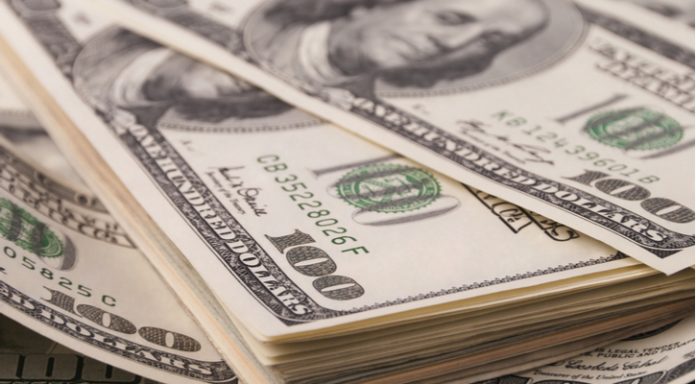The pound declined versus the dollar on Monday, after government ministers talked up the probability of a no deal Brexit. The pound sunk to US$1.2920, its lowest level in almost 11 months.
| What do these figures mean? |
|---|
When measuring the value of a pair of currencies, one set equals 1 unit and the other shows the current equivalent. As the market moves, the amount will vary from minute to minute. For example, it could be written: 1 GBP = 1.28934 USD Here, £1 is equivalent to approximately $1.29. This specifically measures the pound’s worth against the dollar. If the US dollar amount increases in this pairing, it’s positive for the pound. Or, if you were looking at it the other way around: 1 USD = 0.77786 GBP In this example, $1 is equivalent to approximately £0.78. This measures the US dollar’s worth versus the British pound. If the sterling number gets larger, it’s good news for the dollar. |
The pound dropped early on Monday’s session and failed to recover as fears of a no deal Brexit increased. International trade secretary Liam Fox heightened fears by saying that the chances of a hard no deal Brexit were ow 60 — 40 and is putting the blame firmly on the EU. Economists and trade groups have been earning that the UK crashing out of the EU without a deal would be disastrous for the UK economy and therefore the pound. Liam Fox’s comments come following warnings from Bank of England Governor Mark Carney last week. Mark Carney also warned that the chances of a no deal Brexit were uncomfortably high.
| Why is a “soft” Brexit better for sterling than a “hard” Brexit? |
|---|
| A soft Brexit implies anything less than UK’s complete withdrawal from the EU. For example, it could mean the UK retains some form of membership to the European Union single market in exchange for some free movement of people, i.e. immigration. This is considered more positive than a “hard” Brexit, which is a full severance from the EU. The reason “soft” is considered more pound-friendly is because the economic impact would be lower. If there is less negative impact on the economy, foreign investors will continue to invest in the UK. As investment requires local currency, this increased demand for the pound then boosts its value. |
The fears over a hard Brexit have meant that pound traders have quickly moved on from the BoE interest rate rise last week. The central bank raised interest rates by 0.25% to 0.75%, the highest level in a decade. However, the pound has declined every session since the hike as Brexit fears dominate investors’ minds.
Today there is very little on the economic calendar to attract the attention of pound traders. Any Brexit headlines will be the central focus.
US Sanctions On Iran Begin
The dollar traded marginally higher at the start of the week as the US announced sanctions would be placed on Iran as from today. Trump will reimpose tough economic sanctions that had been waived as part of the 2015 Iran Nuclear deal. In November Trump will impose another round of sanctions. As geopolitical tensions increased so did the value of the dollar thank to its safe haven status.
Today the sanctions coming into force will be in focus and even more so given that the US economic calendar is relatively quiet. U consumer credit figures could offer a distraction; however, this is only likely to briefly catch the attention of investors if at all.
This publication is provided for general information purposes only and is not intended to cover every aspect of the topics with which it deals. It is not intended to amount to advice on which you should rely. You must obtain professional or specialist advice before taking, or refraining from, any action on the basis of the content in this publication. The information in this publication does not constitute legal, tax or other professional advice from TransferWise Inc., Currency Live or its affiliates. Prior results do not guarantee a similar outcome. We make no representations, warranties or guarantees, whether express or implied, that the content in the publication is accurate, complete or up to date. Consult our risk warning page for more details.
This article was initially published on TransferWise.com from the same author. The content at Currency Live is the sole opinion of the authors and in no way reflects the views of TransferWise Inc.





